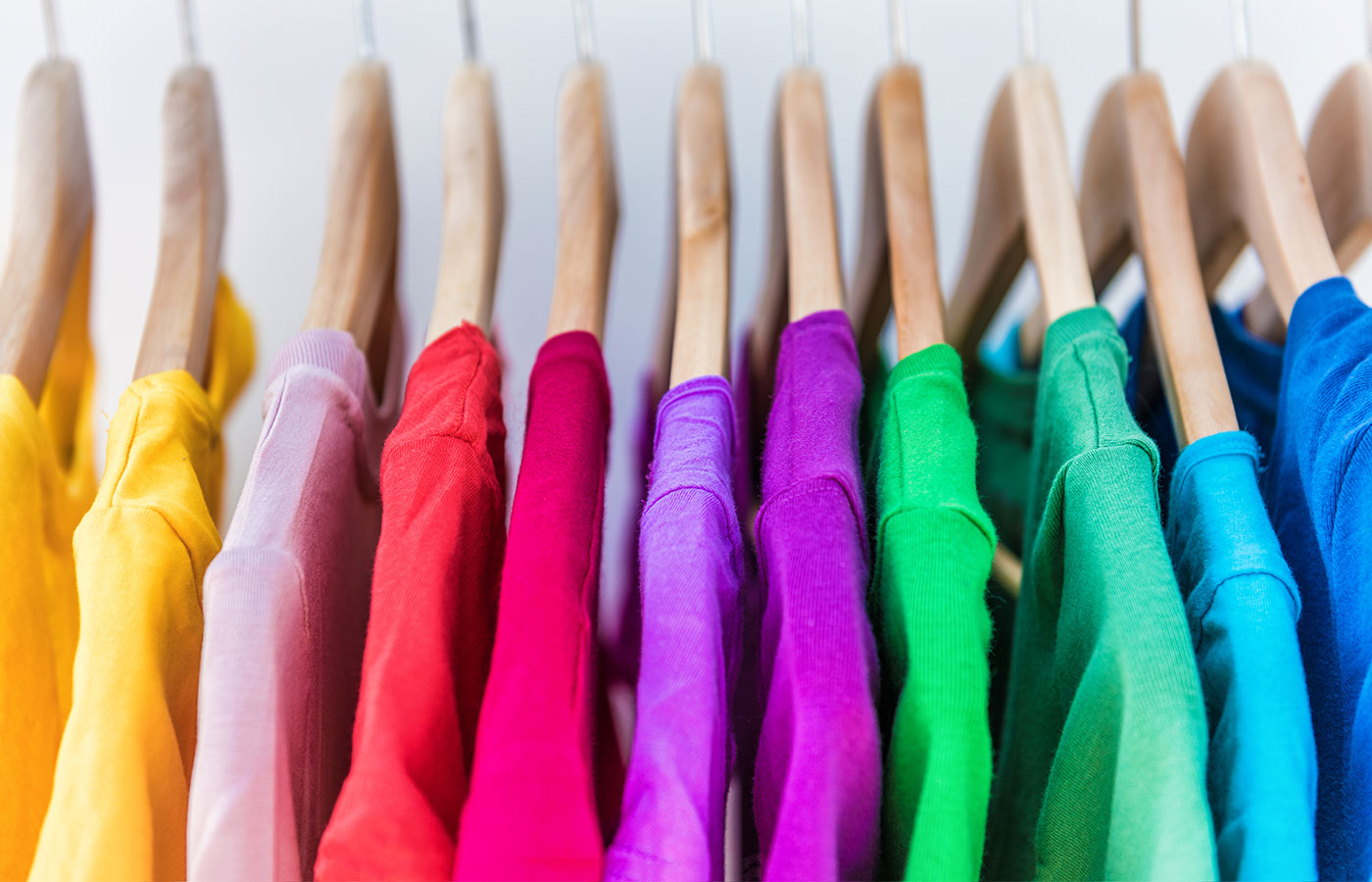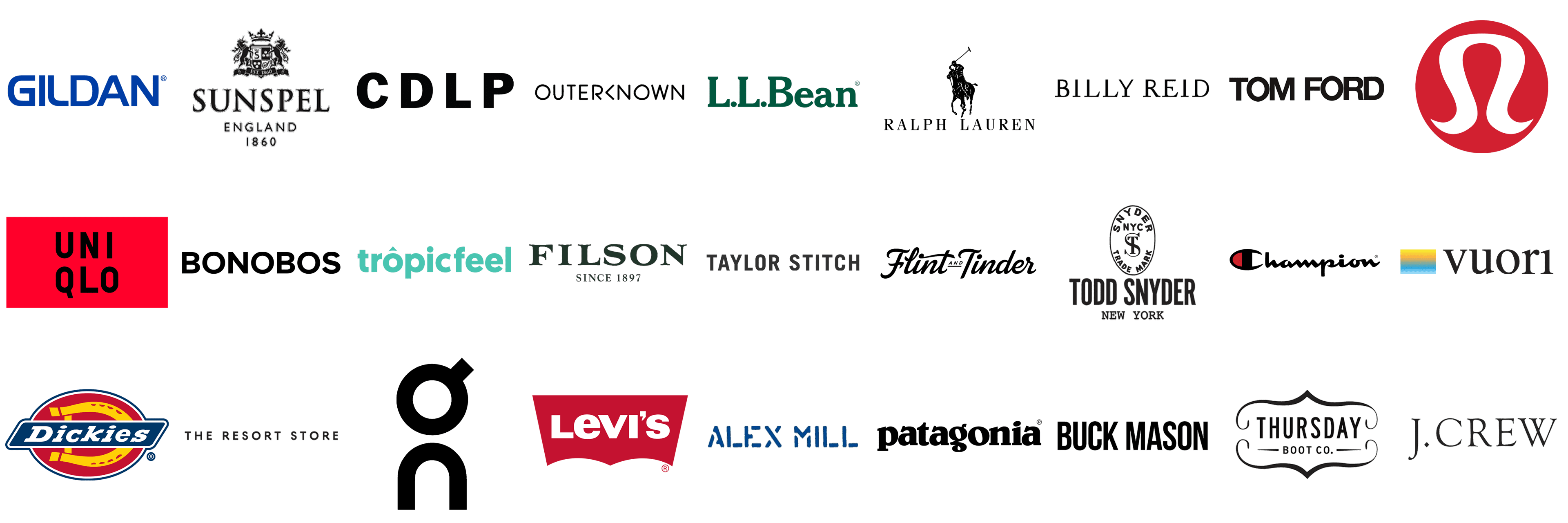The Importance of Lasting Clothes: How It Impacts the Environment and Your Wardrobe
Lasting apparel is significantly identified for its crucial duty in reducing the ecological effect of the quick fashion business. By concentrating on eco-friendly products and ethical production techniques, it deals with pressing environmental worries. This shift not only profits the planet however also influences customer selections, bring about an extra thoughtful technique to wardrobe administration. Recognizing these dynamics raises essential inquiries about fashion's future and individual obligation in shaping it.
The Ecological Footprint of Quick Style

Advantages of Lasting Materials
Sustainable materials offer substantial benefits, particularly via environment-friendly material selections that reduce environmental injury. These materials also demonstrate durability and longevity, minimizing the demand for regular replacements. Therefore, they add to a much more lasting fashion business and advertise accountable consumer actions.
Eco-Friendly Material Options
While the garment industry has long been connected with fast patterns and environmental injury, the increase of environmentally friendly material choices provides a transformative opportunity. Sustainable materials such as organic cotton, hemp, and Tencel have actually obtained popularity due to their reduced environmental effect. These materials are commonly created without unsafe pesticides and call for much less water, lowering their carbon impact - Branded Clothing. In addition, several environment-friendly textiles are naturally degradable, adding to a circular economy by minimizing waste. Picking sustainable products not just sustains ecologically liable methods however additionally promotes healthier ecological communities. As customers become more knowledgeable about their acquiring power, the need for green fabrics urges brand names to innovate and adopt more sustainable production techniques, ultimately benefiting the earth and future generations
Longevity and Longevity Benefits
Several customers are progressively identifying the toughness and long life advantages of sustainable products in their garments selections. Unlike conventional fabrics, lasting products such as natural cotton, hemp, and recycled polyester are engineered to withstand wear and tear, resulting in garments that last much longer. This minimized frequency of replacement not just conserves consumers money with time however additionally diminishes waste produced by rapid style. Furthermore, lasting clothes usually uses green manufacturing approaches that improve material strength, adding to a reduction in the overall carbon impact. By purchasing durable clothing, customers can cultivate a more lasting closet while delighting in premium items that preserve their visual and functionality in time. As a result, sturdiness and long life stand as key benefits of picking lasting products.
Reducing Waste Via Sustainable Practices
Reducing waste in the garment industry can be attained via ingenious methods such as upcycling and repurposing products. Furthermore, adopting minimalist closet methods urges customers to prioritize high quality over quantity, inevitably decreasing clothes consumption. With each other, these approaches add considerably to a more sustainable clothes version.
Upcycling and Repurposing Products
Upcycling and repurposing products have become cutting-edge techniques in the apparel industry, transforming disposed of fabrics right into useful new products. This method not only lessens waste yet additionally motivates creative thinking and individuality in apparel design. By taking old garments and materials, developers can develop one-of-a-kind pieces that reflect individual design while reducing the demand for brand-new resources. In addition, upcycling commonly needs much less power and water compared to standard manufacturing procedures, greatly lowering the environmental impact of fashion. As consumers become much more familiar with sustainability, the popularity of upcycled clothes proceeds to increase, advertising a right here circular economic situation. Eventually, these practices contribute to a much more sustainable future, where fashion prioritizes environmental health over quick production and usage.

Minimalist Closet Strategies
As people progressively seek to lessen their ecological influence, adopting minimal wardrobe methods has actually acquired grip as an effective method to lasting fashion. These techniques emphasize high quality over amount, motivating consumers to curate a smaller sized collection of versatile, long lasting apparel. By concentrating on ageless pieces that can be mixed and matched, people can minimize the frequency of acquisitions and ultimately lower waste.Additionally, minimalism advertises conscious intake, urging shoppers to reflect on the ethical and ecological effects of their selections. This strategy not just promotes a much more lasting lifestyle yet likewise streamlines everyday decision-making pertaining to clothing. As people accept minimal principles, they add to a style society that values sustainability and liable consumerism, eventually leading to a much more eco-conscious culture.
The Role of Honest Labor in Lasting Fashion
While many consumers are significantly knowledgeable about the ecological effects of their clothes selections, the relevance of honest labor techniques in lasting fashion can not be overlooked. Moral labor includes fair wages, risk-free working problems, and regard for employees' rights, creating the foundation of accountable fashion manufacturing. Brands that prioritize ethical labor not only boost neighborhoods however additionally established a criterion for accountability in the industry.Moreover, the combination of honest practices promotes openness, enabling consumers to make enlightened selections regarding their acquisitions. This method contrasts greatly with rapid fashion's exploitative labor versions, which often focus on revenue over individuals. By supporting companies dedicated to honest labor, consumers add to a system that values human self-respect together with environmental sustainability. Honest labor is not just an add-on; it is essential to the broader goal of sustainable fashion, ensuring that the mission for eco-friendliness does not come at the expense of human civil liberties.
The Influence of Lasting Clothes on Carbon Emissions
Sustainable clothes has the potential to significantly decrease carbon exhausts connected with the garment industry. Conventional garment manufacturing adds notably to greenhouse gas emissions, largely because of energy-intensive production procedures and the usage of non-renewable resources. In contrast, sustainable style concentrates on eco-friendly products, such as natural cotton or recycled fibers, which frequently need much less power to produce.Moreover, sustainable brands have a tendency to adopt much more effective production practices, minimizing waste and reducing overall exhausts. By prioritizing toughness and timeless design, sustainable apparel motivates customers to get much less regularly, additional decreasing the carbon footprint associated with overconsumption.Additionally, lots of lasting brands are committed to transparency in their supply chains, enabling consumers to make educated selections that align with their values. Ultimately, moving towards sustainable apparel can result in a substantial reduction in carbon exhausts, adding to a healthier earth and a more lasting future for the fashion business.
Sustaining Local Economies With Sustainable Options
The shift towards lasting clothes not only addresses environmental worries but additionally substantially benefits regional economic situations. By selecting lasting fashion, customers typically sustain little organizations and local artisans, enhancing community resilience. These enterprises normally operate a smaller sized range, focusing on craftsmanship and moral practices over mass production.Investing in locally made lasting clothing fosters job creation and boosts financial growth within neighborhoods. As consumers end up being more familiar with the ecological effect of their purchases, they progressively seek items that show their worths. This need motivates regional makers to embrace sustainable methods, adding to a circular economy.Moreover, supporting neighborhood businesses decreases transportation emissions, straightening additional hints with eco-conscious customer habits. The interconnectedness of sustainable clothes and local economies highlights the important function that individual options play in promoting both environmental and economic health and wellness. By cultivating these regional connections, neighborhoods can thrive while additionally functioning towards a more sustainable future.
Changing Your Closet: Tips for a Sustainable Wardrobe
As people look for to decrease their ecological effect, changing a closet right into a sustainable closet comes to be a crucial step. One effective strategy is to assess existing clothes, keeping just items that are worn routinely which align with sustainability objectives. Prioritizing quality over amount is crucial; purchasing long lasting items from environment-friendly brand names can greatly decrease waste.Additionally, incorporating second-hand products can revive a wardrobe while lessening environmental damages. Organizing clothes swaps with buddies or donating unused products can further advertise sustainability.When buying, individuals must look for products that are natural, recycled, or eco-friendly, and stay clear of rapid style retailers - Branded have a peek at this website Clothing. Practicing conscious usage by attentively taking into consideration each acquisition can add to a more sustainable way of life. By carrying out these tips, one can develop a closet that shows personal style while sustaining ecological stewardship
Often Asked Questions
Just How Can I Determine Sustainable Clothing Brands?
To identify sustainable apparel brands, one need to investigate materials used, look for qualifications like Fair Profession, and take a look at the brand's openness about their manufacturing processes, labor methods, and ecological impact, making sure ethical and green methods are prioritized.
What Are the Prices Connected With Sustainable Style?
The expenses related to sustainable style can differ significantly. Greater production expenditures, honest sourcing, and environment-friendly materials typically lead to boosted market prices, which may deter some consumers while appealing to environmentally mindful consumers.
Can Sustainable Garments Be Fashionable and stylish?
Sustainable clothes can certainly be elegant and stylish. Designers significantly prioritize ingenious materials and honest manufacturing approaches, confirming that style and sustainability can coexist. Consumers now have diverse options that mix looks with ecological consciousness.
How Does Washing Clothing Affect Their Sustainability?
Cleaning clothes substantially effects sustainability by consuming water and energy, adding to contamination, and creating microplastic release. Constant washing can degrade fabrics, shortening their life-span and boosting the demand for substitutes, eventually exacerbating ecological issues.
What Is the Life-span of Lasting Apparel Compared to Rapid Fashion?
The life-span of lasting apparel typically goes beyond that of fast fashion things, usually enduring a number of years as a result of top quality materials and craftsmanship. On the other hand, fast style garments may weaken rapidly, requiring more frequent substitutes. Lasting clothes is increasingly identified for its essential function in decreasing the ecological influence of the quick style industry. While lots of consumers are significantly mindful of the environmental repercussions of their garments selections, the significance of honest labor practices in sustainable style can not be ignored. Branded Clothing. Sustainable clothes has the possible to significantly reduce carbon discharges linked with the fashion sector. In comparison, lasting fashion concentrates on green materials, such as natural cotton or recycled fibers, which commonly need less energy to produce.Moreover, lasting brands have a tendency to adopt more efficient manufacturing methods, minimizing waste and reducing general emissions. By prioritizing toughness and classic layout, lasting garments motivates consumers to get much less often, additional minimizing the carbon footprint connected with overconsumption.Additionally, many lasting brands are committed to openness in their supply chains, making it possible for customers to make informed choices that line up with their values